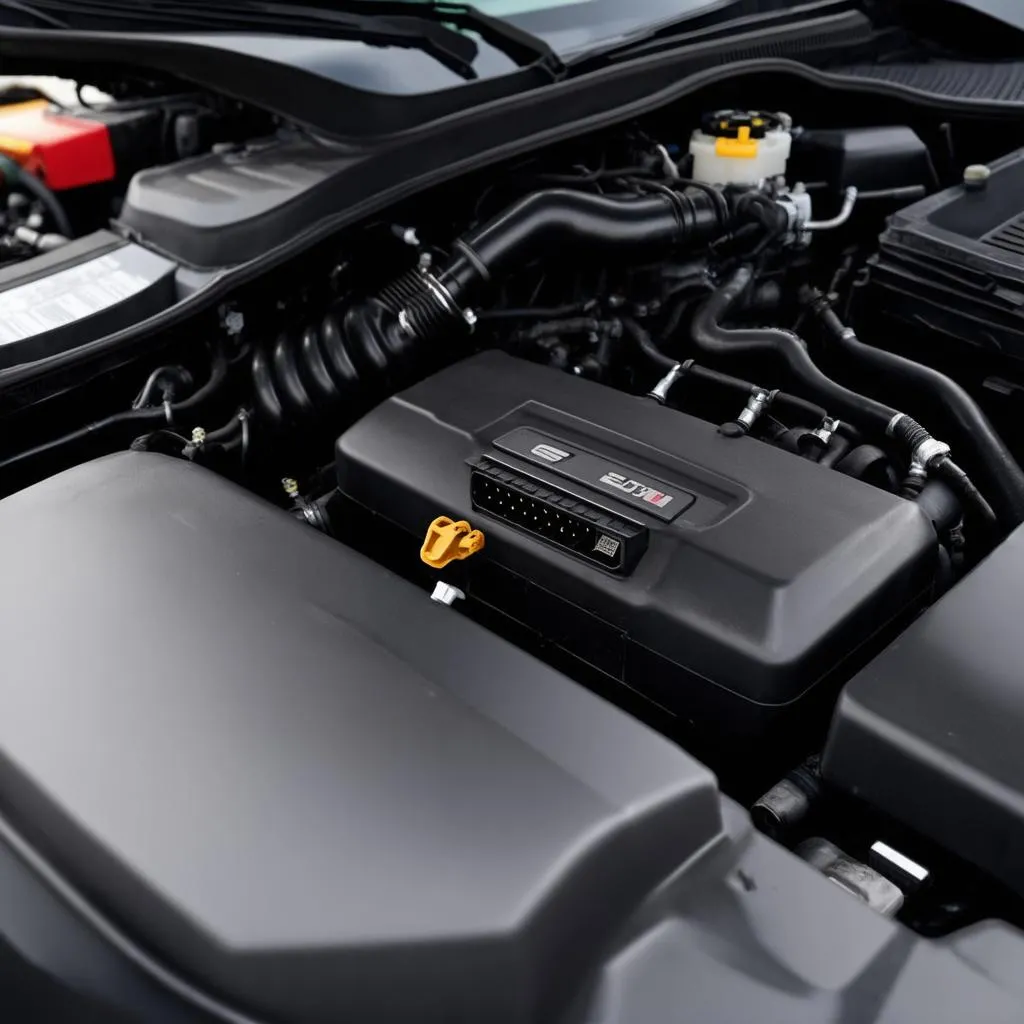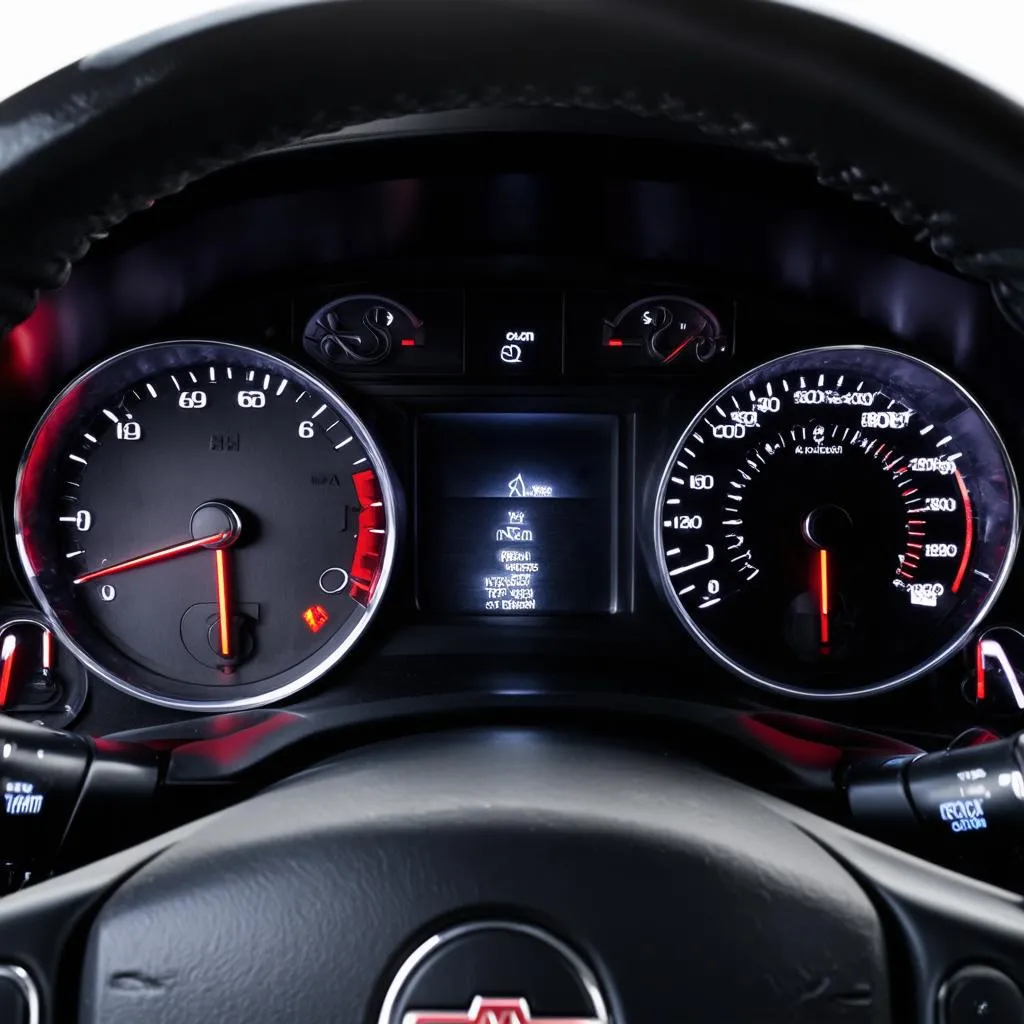Have you ever felt that sinking feeling of seeing the “check engine” light illuminate on your dashboard? It’s a common experience, and for many GM car owners, it often leads to the question: “How do I clear those pesky OBD codes?”
This guide will provide you with the necessary knowledge to understand and clear OBD codes on your GM car. We’ll delve into the technical aspects of the system, explore the meaning behind those error codes, and guide you through the process of clearing them effectively.
Understanding OBD Codes
OBD stands for On-Board Diagnostics, a self-diagnostic system built into modern cars to monitor their performance. When a component malfunctions, the system logs a code, often referred to as a Diagnostic Trouble Code (DTC). These codes provide valuable insights into the problem, allowing mechanics to pinpoint the issue and repair it.
What do OBD Codes mean?
Think of OBD codes as cryptic messages sent from your car’s internal systems. They are not just random numbers; they hold specific information about the problem. Understanding these codes is essential for diagnosing and resolving issues.
Let’s use an example: P0171 is a common OBD code that indicates a “System Too Lean (Bank 1).” This means the engine is receiving too much air and not enough fuel. The “P” at the beginning signifies that it is a Powertrain code, indicating a problem in the engine or transmission.
Why Do OBD Codes Appear?
OBD codes can appear for a variety of reasons, some common ones include:
- Faulty sensors: Oxygen sensors, mass airflow sensors, and temperature sensors can all malfunction and trigger a code.
- Loose or damaged wiring: Wiring can become frayed, disconnected, or corroded over time, leading to electrical malfunctions.
- Faulty components: Components like spark plugs, ignition coils, fuel injectors, or catalytic converters can fail, triggering codes.
- Engine misfire: If the engine is misfiring, it can cause a lean condition and generate an OBD code.
Clearing Obd Codes Gm: Step-by-Step
Now that you understand what OBD codes mean, let’s discuss how to clear them. Clearing OBD codes is not just about erasing the warning light; it’s about addressing the underlying issue.
Using a Diagnostic Tool
The most reliable way to clear OBD codes on a GM vehicle is by using a professional-grade diagnostic scanner.
These scanners, sometimes called “dealer scanners” for European cars, are specifically designed to work with GM vehicles and offer a comprehensive range of diagnostic capabilities.
How to use a Diagnostic Scanner to clear codes:
- Connect the scanner: Plug the scanner into the OBD-II port under your dashboard.
- Select your vehicle: Choose your GM model and year from the scanner’s menu.
- Read the codes: The scanner will display the active codes and any pending codes.
- Clear the codes: Follow the scanner’s instructions to erase the codes.
- Test drive: Take your car for a test drive to see if the problem is resolved.
- If the code returns, investigate further: If the same code reappears, you will need to address the underlying issue, as simply clearing the code won’t fix the problem.
The Importance of Proper Diagnosis
Many people believe that simply clearing OBD codes will resolve the issue, but this is often not the case. While clearing codes may temporarily turn off the “check engine” light, the underlying problem will persist.
Here’s why clearing OBD codes alone isn’t enough:
- Underlying issue: Clearing the code doesn’t address the root cause of the problem. It merely erases the warning message.
- Safety and performance: Ignoring the warning light and not addressing the issue can lead to further damage and potentially unsafe driving conditions.
- Emissions: OBD codes often relate to emissions-related problems. Neglecting these issues could lead to failed emissions tests.
Common OBD Codes for GM Cars
P0171: System Too Lean (Bank 1)
This code is one of the most common OBD codes encountered on GM vehicles. It indicates that the engine is receiving too much air and not enough fuel.
Causes:
- Faulty Oxygen Sensor: The oxygen sensor measures the amount of oxygen in the exhaust and sends this information to the engine control unit (ECU). If the sensor is faulty, it may provide inaccurate readings, leading to a lean condition.
- Vacuum Leak: A vacuum leak can draw in extra air, resulting in a lean condition.
- Faulty Fuel Injectors: If the fuel injectors are not delivering the proper amount of fuel, it can lead to a lean condition.
- Faulty Mass Airflow Sensor: The mass airflow sensor measures the amount of air entering the engine. If the sensor is malfunctioning, it may provide inaccurate readings, resulting in a lean condition.
P0300: Random/Multiple Cylinder Misfire Detected
This code indicates that the engine is experiencing misfires in one or more cylinders.
Causes:
- Faulty Spark Plugs: Worn-out or damaged spark plugs can cause misfires.
- Faulty Ignition Coils: The ignition coils deliver electricity to the spark plugs. If a coil is faulty, it can cause misfires.
- Faulty Fuel Injectors: If a fuel injector is clogged or malfunctioning, it can prevent fuel from reaching the cylinder, leading to misfires.
- Faulty Wiring: Damaged or loose wiring in the ignition system can cause misfires.
Tips for Clearing OBD Codes
- Use a reliable diagnostic tool: Invest in a high-quality diagnostic scanner specifically designed for GM vehicles.
- Follow the scanner’s instructions carefully: Each scanner has its own operating system and instructions for clearing codes.
- Don’t ignore the underlying problem: Clearing codes doesn’t solve the problem. Address the underlying issue to prevent further damage.
- Consider consulting a professional mechanic: If you are not comfortable diagnosing and repairing the problem yourself, seek the help of a qualified mechanic.
Frequently Asked Questions
Q: What is the best OBD scanner for GM cars?
A: There are many great diagnostic scanners on the market, but some popular options for GM cars include:
- ACDelco ADS100: A professional-grade scanner with a wide range of diagnostic capabilities.
- Autel MaxiCOM MK808: A powerful scanner with advanced diagnostic features and support for GM vehicles.
- Foxwell NT510: A versatile scanner with a user-friendly interface and comprehensive support for GM cars.
Q: How often should I clear OBD codes?
A: You shouldn’t clear OBD codes unless there’s a problem that needs to be addressed. Simply clearing codes without addressing the underlying issue won’t solve the problem and could even mask potential problems.
Q: Can I clear OBD codes myself?
A: You can clear OBD codes yourself using a diagnostic scanner. However, if you are not comfortable diagnosing and repairing the problem, it is always best to consult a professional mechanic.
Q: How long does it take to clear OBD codes?
A: Clearing OBD codes with a diagnostic scanner is usually a quick process. It typically takes just a few minutes.
Conclusion
Clearing OBD codes on your GM car is a simple process if you use a professional-grade diagnostic scanner. However, remember that simply clearing the codes doesn’t fix the underlying issue.
Always address the root cause of the problem to ensure the safety and performance of your vehicle.
If you’re looking for guidance on clearing OBD codes or require assistance with any car maintenance, we recommend reaching out to our expert team at techcarusa.com. We offer a comprehensive range of diagnostic and repair services.
Don’t hesitate to contact us via WhatsApp at +84767531508. Our team is available 24/7 to assist you.
 GM Car Engine
GM Car Engine
 Check Engine Light
Check Engine Light